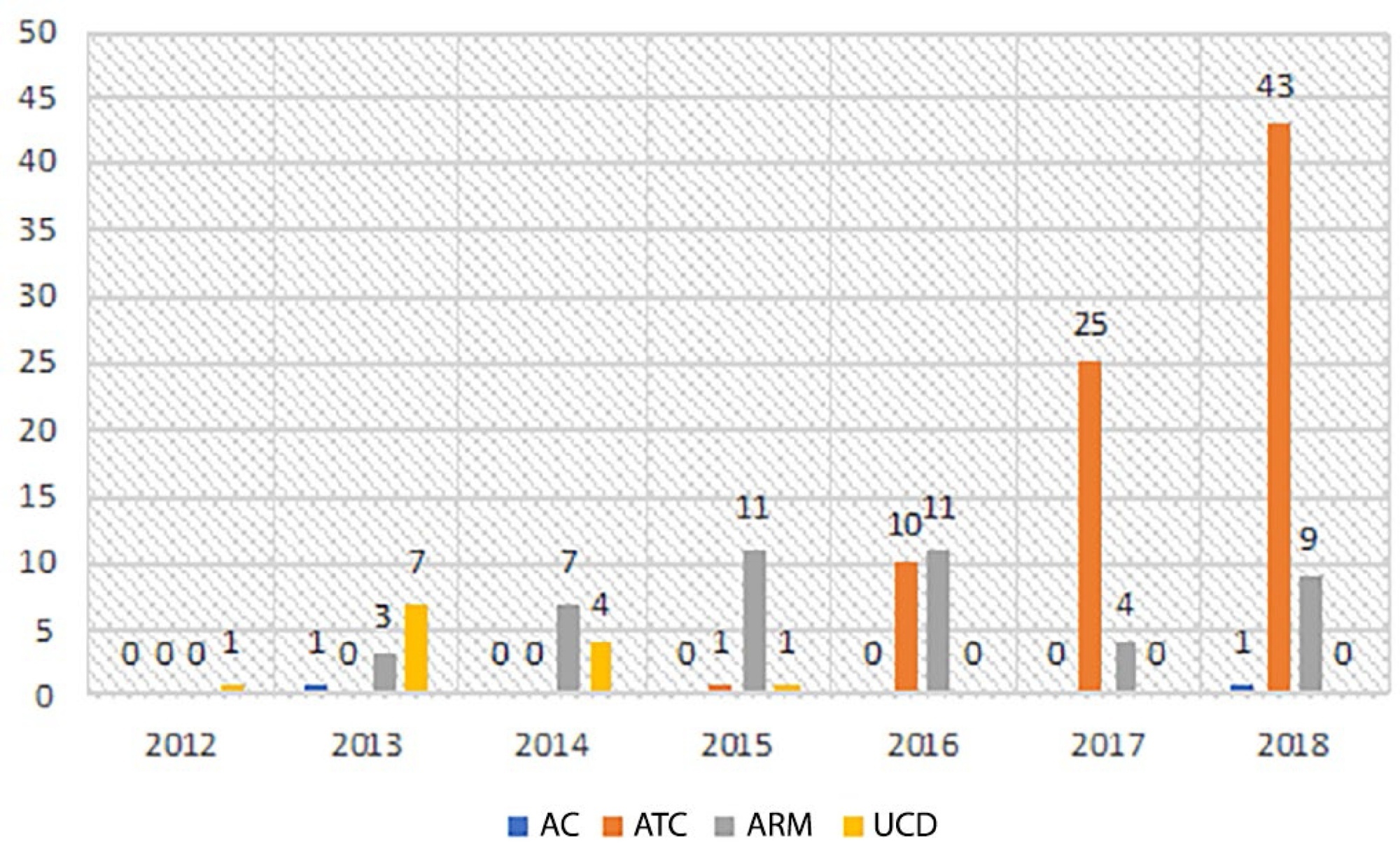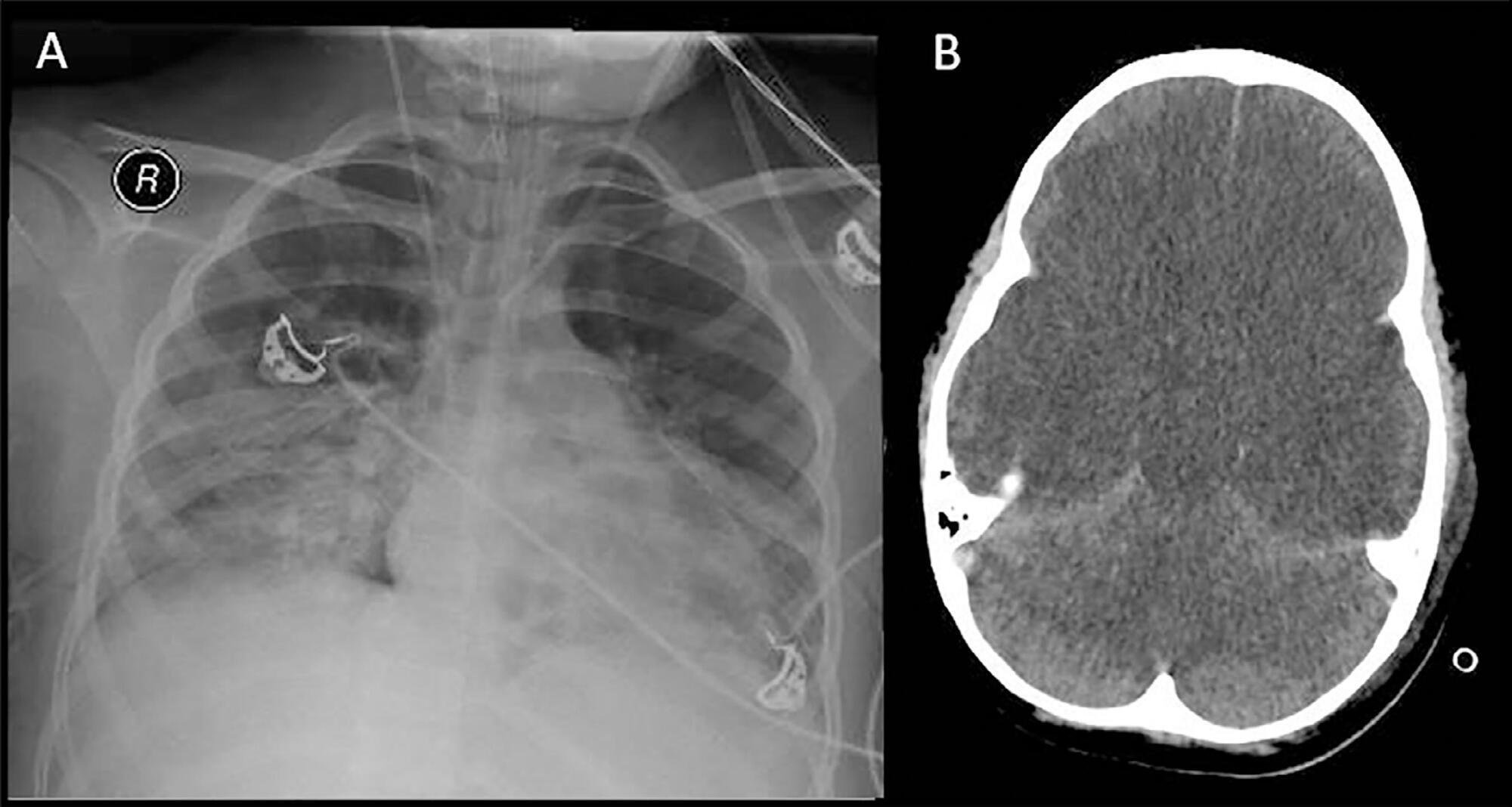Abstract
Rev Bras Ter Intensiva. 2020;32(3):468-473
DOI 10.5935/0103-507X.20200077
Extracorporeal membrane oxygenation is used as extracirculatory support for the care of patients with severe and reversible cardiac and/or respiratory failure. Neurological complications may be related to the procedure. Given the unfavorable neurological evolution and the need to perform a brain death protocol, the performance of an apnea test in this context remains a challenge. We report the use of an apnea test for the diagnosis of brain death post-cardiac surgery in a patient receiving venoarterial extracorporeal membrane oxygenation.

Abstract
Rev Bras Ter Intensiva. 2020;32(3):405-411
DOI 10.5935/0103-507X.20200069
We investigated the frequency of apnea tests, and the use of ancillary tests in the diagnosis of brain death in our hospital, as well as the reasons for not being able to perform apnea testing and the reasons for using ancillary tests.
In this retrospective study, the files of patients diagnosed with brain death between 2012 - 2018 were examined. The preferred test was determined if an ancillary test was performed in the diagnosis of brain death. The rate and frequency of use of these tests were analyzed.
During the diagnosis of brain death, an apnea test was performed on 104 (61.5%) patients and was not or could not be performed on 65 (38.5%) patients. Ancillary tests were performed on 139 (82.8%) of the patients. The most common ancillary test was computed tomography angiography (79 patients, 46.7%). Approval for organ donation was received in the meetings with the family following the diagnosis of brain death for 55 (32.5%) of the 169 patients.
We found an increase in the rate of incomplete apnea tests and concordantly, an increase in the use of ancillary tests in recent years. Ancillary tests should be performed on patients when there is difficulty in reaching a decision of brain death, but it should not be forgotten that there is no worldwide consensus on the use of ancillary tests.

Abstract
Rev Bras Ter Intensiva. 2020;32(2):319-325
DOI 10.5935/0103-507X.20200032
The apnea test, which involves disconnection from the mechanical ventilator, presents risks during the determination of brain death, especially in hypoxemic patients. We describe the performance of the apnea test without disconnection from the mechanical ventilator in two patients. The first case involved an 8-year-old boy admitted with severe hypoxemia due to pneumonia. He presented with cardiorespiratory arrest, followed by unresponsive coma due to hypoxic-ischemic encephalopathy. Two clinical exams revealed the absence of brainstem reflexes, and transcranial Doppler ultrasound revealed brain circulatory arrest. Three attempts were made to perform the apnea test, which were interrupted by hypoxemia; therefore, the apnea test was performed without disconnection from the mechanical ventilator, adjusting the continuous airway pressure to 10cmH2O and the inspired fraction of oxygen to 100%. The oxygen saturation was maintained at 100% for 10 minutes. Posttest blood gas analysis results were as follows: pH, 6.90; partial pressure of oxygen, 284.0mmHg; partial pressure of carbon dioxide, 94.0mmHg; and oxygen saturation, 100%. The second case involved a 43-year-old woman admitted with subarachnoid hemorrhage (Hunt-Hess V and Fisher IV). Two clinical exams revealed unresponsive coma and absence of all brainstem reflexes. Brain scintigraphy showed no radioisotope uptake into the brain parenchyma. The first attempt at the apnea test was stopped after 5 minutes due to hypothermia (34.9°C). After rewarming, the apnea test was repeated without disconnection from the mechanical ventilator, showing maintenance of the functional residual volume with electrical bioimpedance. Posttest blood gas analysis results were as follows: pH, 7.01; partial pressure of oxygen, 232.0mmHg; partial pressure of carbon dioxide, 66.9mmHg; and oxygen saturation, 99.0%. The apnea test without disconnection from the mechanical ventilator allowed the preservation of oxygenation in both cases. The use of continuous airway pressure during the apnea test seems to be a safe alternative in order to maintain alveolar recruitment and oxygenation during brain death determination.

Search
Search in:
Case reports (56) Child (53) Coronavirus infections (34) COVID-19 (46) Critical care (116) Critical illness (54) Extracorporeal membrane oxygenation (26) Infant, newborn (27) Intensive care (72) Intensive care units (256) Intensive care units, pediatric (31) mechanical ventilation (38) Mortality (76) Physical therapy modalities (28) Prognosis (61) Respiration, artificial (119) Respiratory insufficiency (26) risk factors (34) SARS-CoV-2 (28) Sepsis (98)